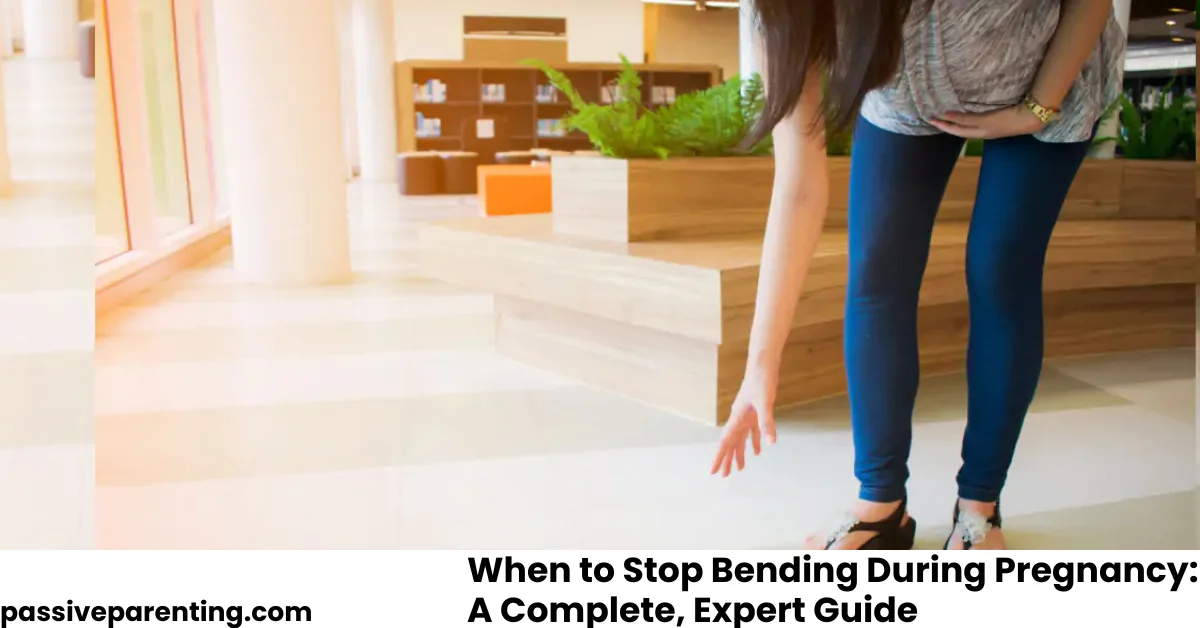Pregnancy brings about remarkable changes in a woman’s body, affecting balance, mobility, and daily comfort. Many expecting mothers wonder: When should I stop bending during pregnancy? This comprehensive guide explores expert-backed advice on bending safety, trimester-specific recommendations, and practical tips—ensuring your safety and peace of mind.
Introduction: Understanding Bending During Pregnancy
Pregnancy affects every aspect of physical movement. As your belly grows, your center of gravity shifts, and simple tasks like bending can become more challenging. While it’s normal to keep up with routine activities, knowing when to stop bending during pregnancy and how to modify your movements is essential for safety and comfort.
Why Bending Becomes Challenging as Pregnancy Progresses
Your body undergoes the following changes, making bending more difficult:
- Shifting Center of Gravity: The uterus expands, moving your weight forward and making you more prone to imbalance and falls.
- Joint Loosening: Pregnancy hormones relax pelvic ligaments for childbirth but also increase the risk of injury during awkward movements.
- Increased Back Strain: Extra weight on the abdomen and breasts strains back muscles, increasing risk of pain or injury during bending.
- Physical Discomfort: Nausea, reflux, and heartburn may be aggravated by bending postures, particularly after meals.
Understanding these shifts lays the foundation for adjustments as pregnancy advances.
Trimester-by-Trimester Guide: When to Stop Bending During Pregnancy
Pregnancy brings unique changes with each trimester, affecting how and when it’s safe to bend. Below, you’ll find detailed guidance tailored for every stage, helping you make informed decisions and prioritize your comfort and safety as your pregnancy progresses.
First Trimester (Weeks 1-12)
- Safety Status: In early pregnancy, bending is generally safe if you have no medical complications. The fetus is well protected in the pelvic cavity, and most women can bend as usual—though some may experience dizziness or morning sickness.
- Tips:
- Take it slow if feeling lightheaded.
- Avoid rapid bending after eating due to nausea or reflux potential.
- Listen to your body—stop if you feel uncomfortable at any time.
- Consult Your Provider If: You experience spotting, cramping, or fainting.
Second Trimester (Weeks 13-27)
- Changing Dynamics: As your belly “pops” and the uterus rises out of the pelvis, the center of gravity shifts. Bending may feel awkward, but is often still safe if done correctly.
- Safety Focus:
- Prioritize balanced movements to avoid falls.
- Limit repetitive or prolonged bending, especially as your bump grows.
- Best Practices:
- Use support (chairs, counters) to steady yourself if needed.
- Transition to squatting or half-kneeling rather than bending from the waist.
Third Trimester (Weeks 28-Birth)
- Heightened Caution: This is when most experts recommend you minimize or avoid conventional bending. The baby is larger, your joints are looser, and your balance is most compromised.
- Risks of Bending:
- Increased chance of falls and back injury.
- Greater discomfort, including breathlessness, dizziness, and heartburn.
- Expert Recommendations:
- Switch to reaching, kneeling, or using grabber tools wherever possible.
- Enlist help with low or heavy tasks.
- Stop immediately if you have pain, dizziness, loss of balance, or uterine contractions.
Signs You Should Stop Bending Immediately
Always put your safety first. Discontinue bending and consult a healthcare professional if you experience:
- Severe pain in abdomen, back, or pelvis
- Dizziness or feeling faint
- Loss of balance or falls
- Vaginal bleeding or fluid leakage
- Reduced fetal movement
- Uterine contractions or cramping
These red flag symptoms may indicate complications that warrant immediate evaluation.
How to Bend Safely During Pregnancy
If bending is required, use these techniques to protect your back and your baby:
The Safe Squat Technique
- Stand with Feet Shoulder-Width Apart: Position your feet firmly on the ground for a stable base and balanced posture.
- Bend at the Knees and Hips, Not at the Waist: Lower your body by flexing your knees and hips while keeping your back straight. This reduces strain on your lower back by distributing weight evenly through your legs and glutes instead of your spine.
- Keep Your Back Straight—Avoid Hunching: Maintain the natural curve of your spine throughout the movement. Hunching increases back strain and risks injury.
- Hold Objects Close to Your Body: When picking up items, keep them near your torso to minimize leverage and reduce pressure on your back.
- Rise Slowly Using Leg Muscles: Push up with your legs, engaging thigh and buttock muscles. If needed, place a hand on nearby furniture or a stable surface to assist with balance and support during standing.
Why This Technique Matters
Bending by squatting rather than from the waist helps maintain your center of gravity and decreases the risk of falls as pregnancy shifts your balance. It reduces tension on the spine and ligaments, which are more vulnerable during pregnancy due to hormonal laxity. Avoiding twisting motions while bent is essential because twisting combined with bending can increase spinal stress and injury risk. Instead, turn your whole body if you need to face a different direction.
“Proper lifting and bending technique—bending at the knees and hips and keeping your back straight—reduces strain on the back and maintains balance. Twisting motions should be avoided, and support should be used when possible.”
Ergonomics: Adapting Your Routine and Environment
Making small ergonomic adjustments helps you move more safely:
- Keep Frequently Used Items at Waist Height: Place daily essentials on higher shelves or counters.
- Modify Household Chores: Use vacuums, mops, and tools with long handles; delegate heavy or repetitive low-reach chores to others.
- Optimize Your Workspace: If you work at a desk, position items so you don’t need to frequently bend or twist.
- Use Support: Whether holding onto furniture or having a partner assist, support minimizes risk.
Myths vs. Facts About Bending During Pregnancy
| Myth | Fact |
|---|---|
| Bending always harms the baby | Most healthy pregnancies tolerate moderate bending if done safely. |
| You must stop bending altogether after first trimester | There’s no strict stop date—comfort and safety are your guides. |
| Bending causes miscarriage or preterm labor | No evidence supports this for healthy women. |
Pregnancy Back Pain, Lifting, and Balance: Additional Safety Tips
Pregnant women are more prone to back injuries and falls. To prevent these:
- Wear Supportive, Non-Slip Footwear: Stability from proper shoes prevents slips or falls.
- Avoid Holding the Bent Position for Too Long: Minimize the duration spent bent to reduce muscle fatigue and back strain.
- Use Assistive Devices When Possible: Tools like long-handled grabbers or reachers can reduce the need to bend deeply or frequently.
- Organize Your Living Space: Keep regularly used items at waist or chest height to avoid frequent bending.
- Ask for Help: Whenever lifting or bending is challenging or risky, seek assistance from others.
Incorporate Professional Insights
According to the American College of Obstetricians and Gynecologists (ACOG):
“Pregnancy is not a reason to stop all physical activity. However, movements that challenge balance or significantly strain the back should be approached with caution, especially in later pregnancy.”
NHS guidance echoes similar advice:
“Bending is usually safe in pregnancy, but as the bump grows, it may become uncomfortable. Listen to your body, and always opt for safer movement or assistance to avoid injury or strain.”
When to Consult a Healthcare Provider (Checklist)
- You experience abdominal pain, vaginal bleeding, or contractions.
- You faint or feel persistently dizzy after bending.
- You have a fall, regardless of whether it seemed minor.
- Movement feels increasingly unstable or painful.
- You notice reduced fetal movement.
Never hesitate to reach out. Prompt guidance can address potential issues early.
FAQs About Bending During Pregnancy
Conclusion: Prioritizing Comfort and Safety
When to stop bending during pregnancy is a personal decision informed by comfort, safety, and the progression of your pregnancy. Use this article’s trimester-based tips, safe movement advice, and ergonomic insights to modify daily activities and keep yourself and your growing baby safe. Always consult your healthcare provider for customized advice—when in doubt, err on the side of caution.




